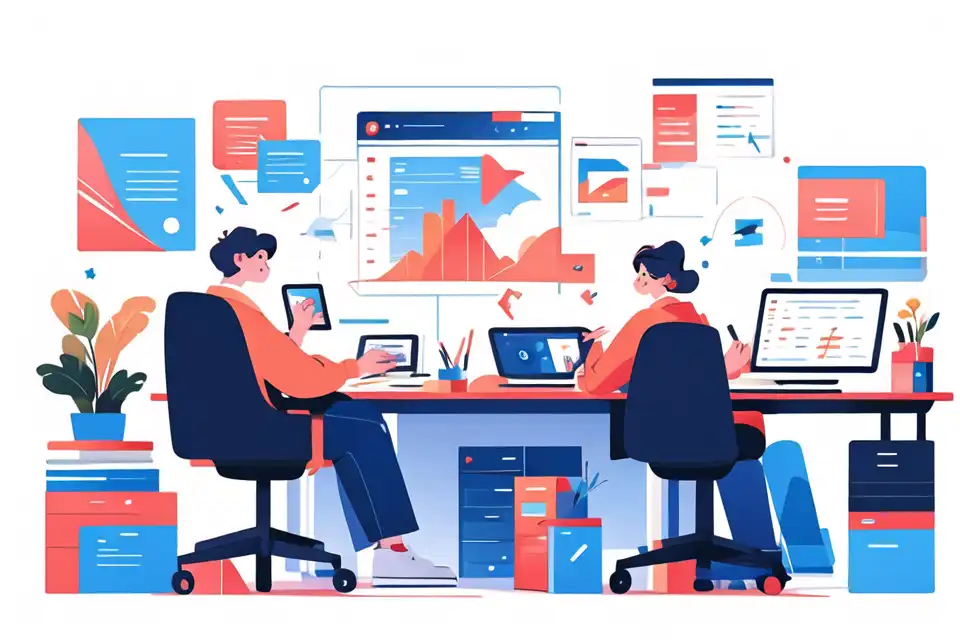Business Forecasting for Design and User Experience Teams
Explore business forecasting for design and user experience teams, ensuring efficiency and successful project management outcomes.
Try Lark for Free
In this article, we will explore the relevance of business forecasting for design and user experience teams. We'll delve into the benefits, steps for implementation, common pitfalls to avoid, and address commonly asked questions to provide a comprehensive understanding of this strategic approach.
Leverage Lark for project management within your team.
Understanding business forecasting
Business forecasting involves the use of historical data, market trends, and other critical factors to predict future business conditions. When applied to design and user experience teams, this approach allows organizations to anticipate trends, align resources, and capitalize on emerging opportunities, thereby driving innovation.
Business forecasting methods for design and user experience teams encompass various approaches, including predictive analytics, trend analysis, and user behavior forecasting. These techniques enable teams to gain insights into user preferences, anticipate market shifts, and proactively respond to changing demands, ultimately leading to a competitive edge.
Benefits of business forecasting for design and user experience teams
Improved Decision-Making Through Data-Driven Insights
Implementing business forecasting empowers design and user experience teams to make informed decisions. By analyzing user behavior and market trends, teams can anticipate customer needs, align design strategies, and enhance the overall user experience.
Early Identification of Design and User Experience Trends
Business forecasting aids in identifying emerging design and user experience trends. By leveraging predictive analytics, teams can stay ahead of industry shifts, anticipate user preferences, and tailor experiences to meet evolving needs, fostering a proactive rather than reactive approach.
Resource Allocation and Budget Planning
Forecasting enables effective resource allocation and budget planning for design and user experience initiatives. By predicting resource requirements based on future trends and user expectations, teams can allocate resources efficiently, optimize project timelines, and manage budget constraints effectively.
Steps to implement business forecasting for design and user experience teams
Assessing the Current State of the Design and User Experience Team
- Conduct a comprehensive review of the current design and user experience processes, including user research methodologies and design strategies.
- Identify existing data sources and evaluate the effectiveness of current data collection methods.
- Assess the alignment between the design approach and user preferences to identify any existing gaps.
Data Collection and Analysis Methods
- Implement advanced data collection techniques such as user surveys, A/B testing, and heat mapping to gather comprehensive user data.
- Leverage data analysis tools to derive meaningful insights from user interactions, behavior patterns, and market trends.
- Integrate qualitative feedback mechanisms to complement quantitative data and gain a holistic understanding of user preferences and expectations.
Incorporating Business Forecasting into the Design and User Experience Process
- Integrate data-driven insights into the design and user experience decision-making process.
- Establish forecasting models that align with the design and user experience objectives, incorporating user-centric metrics and market dynamics.
- Foster a collaborative approach, involving cross-functional teams to ensure comprehensive data integration and alignment with broader business objectives.
Performance Evaluation and Feedback Loop
- Implement a continuous performance evaluation process to measure the effectiveness of forecasted design and user experience initiatives.
- Establish feedback loops to gather user input, assess the impact of design changes, and refine forecasting models based on real-time user insights.
- Iterate on design and user experience strategies based on the feedback received, fostering an adaptive approach to forecasting.
Adapting to Changing Market Conditions
- Stay abreast of industry trends, technological advancements, and shifts in user behavior to adapt forecasting models accordingly.
- Utilize agile methodologies to iterate on design strategies and respond swiftly to market fluctuations and emerging user needs.
- Embrace a culture of continuous learning and adaptation, integrating evolving market dynamics into the forecasting process.
Learn more about Lark Project Management for Teams
Common pitfalls and how to avoid them in design and user experience teams
Over-Reliance on Historical Data
Historical data is valuable, but over-reliance on it could lead to missed opportunities. To avoid this pitfall, teams should balance historical analysis with forward-looking data and qualitative insights to capture the complete user experience landscape.
Ignoring Qualitative Factors
While quantitative data is critical, overlooking qualitative aspects such as user feedback, emotional responses, and cultural nuances can hinder the accuracy of forecasting. Incorporating qualitative factors enriches the forecasting process, ensuring a more comprehensive understanding of user needs and behaviors.
Lack of Cross-Functional Collaboration
Isolating the forecasting process within the design and user experience silo can limit its effectiveness. Collaborative integration with marketing, product development, and customer insights teams fosters a holistic approach, aligning forecasting with broader business strategies and objectives.
Learn more about Lark Project Management for Teams
Leverage Lark for project management within your team.








